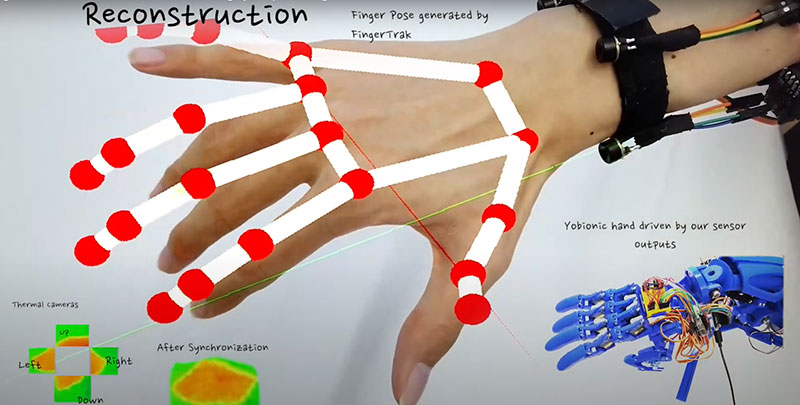In a potential breakthrough in wearable sensing technology, researchers from Cornell and the University of Wisconsin, Madison, have designed a wrist-mounted device that uses thermal sensors to accurately predict hand positions.
Read more Scientists From NTU Singapore Develop AI System For High Precision Recognition of Hand Gestures
The bracelet is called FingerTrak and it incorporates four miniature, low-resolution thermal cameras. The system uses machine learning to sense and translate into 3D the many positions of the human hand, including 20 finger joint positions. It has the potential for a variety of uses including automated sign-language translation, virtual reality, human-robot interaction and other areas, the researchers said.
“This was a major discovery by our team – that by looking at your wrist contours, the technology could reconstruct in 3D, with keen accuracy, where your fingers are,” said Cheng Zhang, assistant professor of information science and director of Cornell’s new SciFi Lab, where FingerTrak was developed. “It’s the first system to reconstruct your full hand posture based on the contours of the wrist.”

Yin Li, assistant professor of biostatistics and medical informatics at the University of Wisconsin, Madison School of Medicine and Public Health, contributed to the software behind FingerTrak.
The team said the system will need a bit more refining to make it useful in various fields. It could allow VR game players to track their own hand movements or it could make for remote-controlled robots that directly mimic a human operator’s motions.
FingerTrak could also have an impact on health care applications, specifically in monitoring disorders that affect fine-motor skills, Li said.
“How we move our hands and fingers often tells about our health condition,” Li said. “A device like this might be used to better understand how the elderly use their hands in daily life, helping to detect early signs of diseases like Parkinson’s and Alzheimer’s.”
Read more With Tap Strap 2 You Can Control Any Bluetooth-Enabled Device with Gesture
The research was published in Proceedings of the Association for Computing Machinery on Interactive, Mobile, Wearable and Ubiquitous Technologies.












